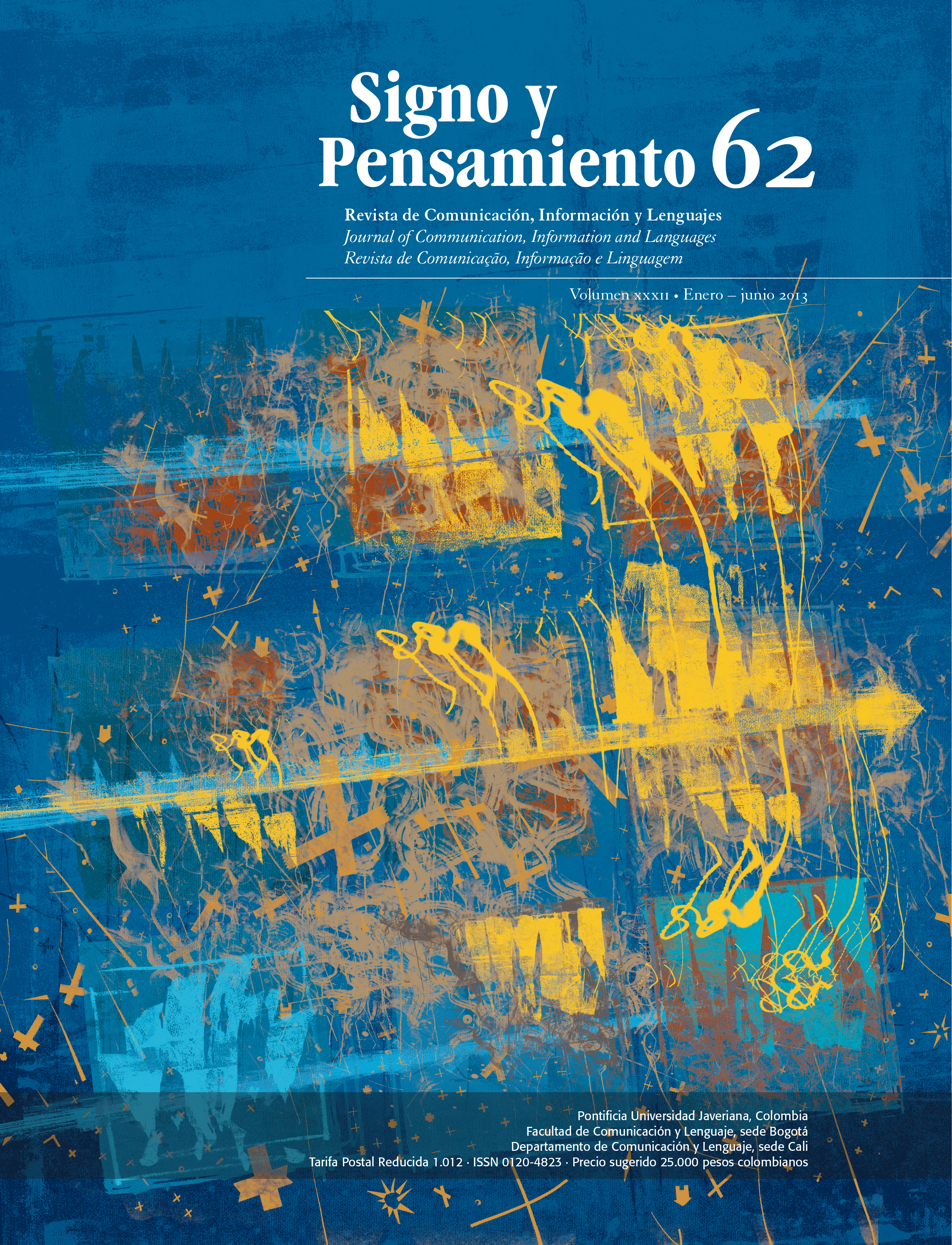Abstract
Since its emergence in Brazil, the soap opera favors advertising strategies embedded in its daily episodes, such as the advertising spot. Since 1969, a new phenomenon began to settle, the tie-in, which included to the soap operas’ plots some products and services consumed by the characters, suggesting a consumption or a real use. The purpose of this paper is to present the results of a content analysis of soap operas in the last two years (2010-2011, TV Rede Globo in Brazil). The analysis focuses on the relationship between the range of topics and its advertising actions.
Bolaño, C. (1988). Mercado brasileiro de Televisão. Aracaju: UFS, Gráfica Diplomata.
Borelli, S. H. S. (2001). Telenovelas brasileiras: balanços e perspectivas. São Paulo em Perspectiva, 15 (3), 29-36. Recuperado de http://dx.doi. org/10.1590/S0102-88392001000300005.
Campedelli. S. Y. (1985). A telenovela. São Paulo: Ática.
Castro, M. L. D. (2005). Televisão e publicidade: ações convergentes. En Congresso Brasileiro de Ciências da Comunicação 28. Rio de Janeiro. São Paulo: Intercom, Recuperado de http://www.intercom.org. br/papers/nacionais/2005/resumos/R1622-1.pdf.
Feltrin, F. H. (2011). O Merchandising Editorial Como Ferramenta de Persuasão e Encantamento. Razón y Palabra 74. Recuperado de http://www.razonypalabra.org.mx/ rypant/N/N74/VARIA74/02FeltrinV74.pdf.
Fernandes, I. (2002). Telenovela brasileira. São Paulo: Brasiliense.
Figueiredo, C. (2005). Redação publicitária: sedução pela palavra. São Paulo: Thomson Learning.
Folha de São Paulo. (2012). Folha de São Paulo. Globo fecha ano com faturamento em alta e ibope em queda. Recuperado de http://www1.folha.uol. com.br/ilustrada/1028388-globo-fecha-ano-com- -faturamento-em-alta-e-ibope-em-queda.shtml.
Folha Ilustrada. (2012). Globo fecha ano com faturamento em alta e ibope em queda. Recuperado de http://www1.folha.uol.com.br/ilustrada/1028388-globo-fecha-ano-com-faturamento-em-alta-e-ibope-em-queda.shtml
Globo Comercial. (2012). [Home page] Recuperado de http://comercial2.redeglobo. com.br/midiakit/Documents/PDFs/ formatos+comerciais.pdf
Gregoripavan. (2012). Investimento publicitário: TV lidera com 53%, Internet cresce 71% e Cinema encolhe 21% em 2011. Recuperado de http://gregoripavan.blogspot.com.br/2012/01/ investimento-publicitario-tv-lidera-com.html
IBOPE. [Home Page]. Recuperado de www.ibope.com.br
Maranho, E. P. & Brida, G. (2009). Merchandising comercial na telenovela: da persuasão ao incômodo. Trabalho do Programa de Iniciação Científica do Cesumar (PIC) – Faculdade de Publicidade e Propaganda do Centro Universitário de Maringá, Paraná. Recuperado de http://www.cesumar.br/ curtas/psicologia2008/trabalhos/MERCHANDISING_COMERCIAL_NA_TELENOVELA_ DA_PERSUASAO_AO_INCOMO DO.pdf
Oguri, L. M. B., Chauvel, M. A. & Suarez, M. C. (2009). O processo de criação das telenovelas. Revista de Administração de Empresas49 (1), 38-48.
Pallottini, R (1998). Dramaturgia de televisão. São Paulo: Moderna.
Rede Globo. (2012). [Home Page]. Recuperado de http://redeglobo.globo.com/TVG/0,,9648,oo.html
Sadek, J. R. (2008). Telenovela: um olhar do cinema. São Paulo: Summus.
Santana, D. O. & Ferreira, R. M. C. (en evaluación). A Força do Hábito: Um Estudo Sobre a Tradição Temática das Telenovelas da Rede Globo por Faixa de Horário. Palabra Clave.
Schiavo, M. (1999). Merchandising social: uma estratégia de sócio-educação para grandes audiências. Rio de Janeiro: Universidade Gama Filho.
Souza, J. C. A. (2004). Gêneros e formatos na Televisão brasileira. São Paulo: Summus.
Torres, C., Arthur, F (1995). “Produção Independente- -Projetos e Possibilidades”. En Almeida C. J. M. & Araujo, M. E. As Perspectivas da Televisão brasileira ao vivo. Rio de Janeiro: Imago, 1995. 27-37.
Trindade, E. (2007). Merchandising televisivo: tie-in. En Peres, C,, Barbosa, I. S. (orgs) Hiperpublicidade: fundamentos e interfaces, v. 11. São Paulo: Tomson Learning.
Vassallo de Lopes, M. I. (1999). Telenovela brasileira: uma narrativa sobre a nação. Comunicação & Educação 26, 17-34. Recuperado de http://www.revistas.univerciencia.org/index. php/comeduc/article/viewFile/4195/3934
White, R (2008). Tendências dos Estudos de Recepção. Comunicação & Educação 5, (13), 41-66.
This journal is registered under a Creative Commons Attribution 4.0 International Public License. Thus, this work may be reproduced, distributed, and publicly shared in digital format, as long as the names of the authors and Pontificia Universidad Javeriana are acknowledged. Others are allowed to quote, adapt, transform, auto-archive, republish, and create based on this material, for any purpose (even commercial ones), provided the authorship is duly acknowledged, a link to the original work is provided, and it is specified if changes have been made. Pontificia Universidad Javeriana does not hold the rights of published works and the authors are solely responsible for the contents of their works; they keep the moral, intellectual, privacy, and publicity rights.
Approving the intervention of the work (review, copy-editing, translation, layout) and the following outreach, are granted through an use license and not through an assignment of rights. This means the journal and Pontificia Universidad Javeriana cannot be held responsible for any ethical malpractice by the authors. As a consequence of the protection granted by the use license, the journal is not required to publish recantations or modify information already published, unless the errata stems from the editorial management process. Publishing contents in this journal does not generate royalties for contributors.


